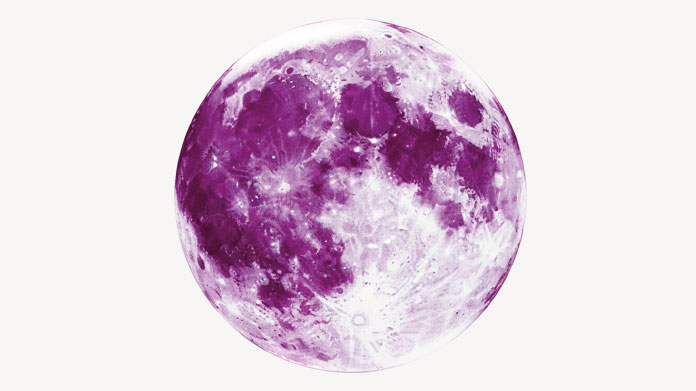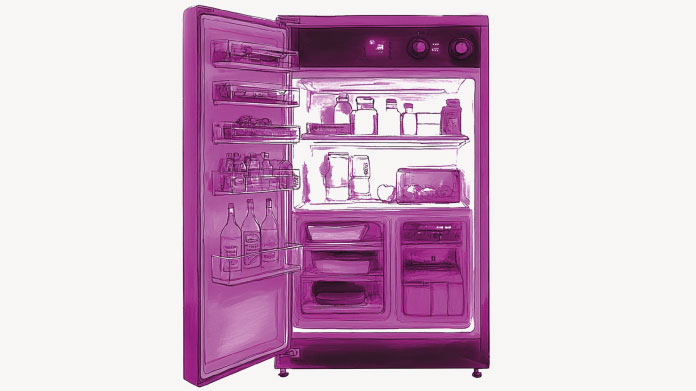
What is blue light?
Increasingly present in our day-to-day lives, screens expose us to blue light, a visible part of the electromagnetic spectrum. In fact, there are different types of light rays – some visible, such as blue light, and others invisible, such as ultraviolet or infra-red. When visible light rays enter the eyes, a message is sent to the brain which then interprets them as what we see.
Each ray in the light spectrum has a specific wavelength and a different colour. Characterised by a wavelength between 380 and 500 nanometres, blue light actually includes a range of colours from ‘blue-turquoise’ to ‘blue-violet’. Specialists tend to distinguish between ‘blue-turquoise’ which has an effect on the sleep/wake cycle, and ‘blue-violet’ which is harmful to eye health.
What are the consequences of overexposure to blue light?
Many experts are sounding the alarm over the risks of too much exposure to blue light. It can have a number of effects on the body, particularly the eyes, with red eye, stinging, or a burning sensation among the common symptoms of excessive exposure to ‘blue-violet’ light. These symptoms indicate eye fatigue which is often accompanied by dry eye, headaches and migraine.
Excessive exposure to the ‘blue-turquoise’ light emitted by screens can also have an effect on the quality of our sleep as it stimulates the retina and disrupts the synthesis of melatonin. Often referred to as the ‘sleep hormone’, melatonin plays a key role in sleep-wake phases. Sleep problems such as falling asleep, insomnia, or difficulty waking up, can all be caused by the ‘blue-turquoise’ light emitted by our screens.
What are the long-term risks?
A number of scientific studies have investigated the long-term impact of blue light. Researchers believe that prolonged exposure could have irreversible effects on the eyes. It may cause premature ageing of the eyes and the development of vision problems, particularly age-related macular degeneration (AMD) and cataracts. This is why eye specialists are calling for better prevention against the risks of blue light.
What solutions are available for protecting ourselves against blue light?
While the best response would be to reduce our exposure to blue light, this is increasingly difficult given how screens now dominate daily life for many of us. Nonetheless, vision and sleep specialists do recommend cutting down our screen time and exposure to blue light as much as possible, particularly before going to bed. For a few years now, opticians have also been suggesting we wear blue light-blocking glasses to reduce the risks to our eyes.
Another way of protecting ourselves against the dangers of blue light is to boost the eyes’ defences with the aid of natural compounds. Lutein, for example, is a substance known to play a protective role in the retina. A yellow pigment from the carotenoid family, it works both as an ‘anti-blue light filter’ and an antioxidant. Other natural antioxidants, such as anthocyanosides from blueberries, also offer benefits in protecting eye tissue. Combining a selection of the best photo-protective agents, synergistic formulations such as OptiVision can also be used to prevent vision-related problems.
6 Days
Delivery is prompt and I never saw a…
Delivery is prompt and I never saw a quality problem with the manufacturing. It is not possible to assess efficacy on a personal basis, since too many factors come into play. Efficacy can only be assessed statistically with a sufficient number of cases.
Roger De Backer
7 Days
I collaborates with the Supersmart…
I collaborates with the Supersmart more than 10 years. Every thing is going good. Quality of the things is good. Delivery comes in time. Five stars definitely !!!
Oleksiy
7 Days
All good
Simple, frictionless site, easy ordering, good delivery updates and execution.
Chris Robbins
9 Days
I feel better
I feel better
Peter Ammann
10 Days
Prompt delivery
Prompt delivery
JAKUB Radisch
11 Days
My new go-to for top quality supplements!
I am buying more and more of my supplements from this superb, high quality company. Cannot recommend it enough. Plus, excellent customer service with a quick, helpful team and speedy deliveries. Highly recommend Supersmart!
Cecilie H.
15 Days
SUPERSMART WHAT ELSE👍
SUPERSMART WHAT ELSE👍
DIEDERLE Christophe
18 Days
Excellent quality products with…
Excellent quality products with innovative formulas, as someone who has been suffering with acid reflux, these supplements have been lifesavers.
Oriana Moniz
18 Days
high quality supplement!
high quality supplement!
GALANT
18 Days
Good service prompt delivery
Good service prompt delivery
Mrs Marcella Reeves
23 Days
I like your clear explanation
I like your clear explanation. And how to make a choice of products for a specific health problem
Ingrid
29 Days
Great product and it arrives quickly.
Great product and it arrives quickly.
SOMMARIVA Gianni
31 Days
Excellent products and fast service.
Excellent products and fast service. What do we need more?
Margarida
35 Days
The variety of products is amazing
The variety of products is amazing, the offers are good and the sending is very fast. I just miss having a bit more of guidance about combinations, possible interactions, etc.
Maria Angeles Verdu
36 Days
It was quick
It was quick.
Timo Antero





